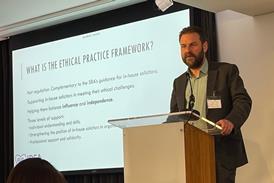Places of higher education are facing profound challenges following the arrival of large language models like ChatGPT.

A recent article in New York magazine called Everyone Is Cheating Their Way Through College, raised the possibility that AI (on behalf of an academic) is now evaluating AI-generated papers (from students), reducing the entire academic exercise to a conversation between two robots — or maybe even just one.
This is not just a problem for college students. Training for junior lawyers is at risk, since the old on-the-job method of asking a trainee or newly qualified solicitor to prepare a written document as a way to learn is no longer viable. Of all those lawyers whose education will be disrupted by AI, trainees and junior lawyers are the most affected: their most basic skills are in danger of erosion.
We know this from our own lives: who needs to read a map any longer when there are mapping apps? Who needs to maintain language skills when there are translation apps?
And, to apply the analogy to our profession, who needs to undertake document review or research in person, or analyse statutes and case law, or extract key precedents or draft initial documents, when a large language model can do it in seconds?
Yet, to state the obvious, how – without proper training in basic legal skills - will we have competent senior lawyers in due course, able to judge whether an automated product is right or wrong?

Read more by Goldsmith
Some of the problems may be got around by properly structured training, mentorship, peer reviews and the establishment of clear protocols for the use of AI.
But more novel ways of AI-proof training should also be used. One is by making a particular assignment happen in real time in the absence of computers. At some US colleges, for instance, the students have to pass on what they have learned in live sessions to others who want to hear about it – not to academic staff or their student peers, but in public spaces such as to students in other colleges or to citizens in public libraries or old age homes. Before going live, the students rehearse what they are going to say, and discuss what they have learned afterwards. This removes the pitfalls of written work which can be so easily downloaded. Live learning should be adapted to the needs of junior lawyers, too.
We know that this is only a part of future lawyer training changes. We will all have to be trained properly in how to use AI. It should be part of every course on the digitalisation of justice, and should not be left to each individual lawyer’s trial-and-error.
The following are some of the constituents of a basic AI training session for all lawyers:
(a) the usefulness of having an AI policy in your law firm: what can and can’t be done by AI; when do you have to declare that you have used AI in the work undertaken, either within the firm or to clients, and how does the use of AI square with your ethical obligations?
(b) how does generative AI work – is it thinking, is it telling the truth, or is it just coming up with a plausible answer based on probabilities? how and on what has it been trained? where is your data stored and is client confidentiality guaranteed? Does it have biases?
(c) how to get the best out of AI – how to frame original and follow-up questions.
Tech developments have also expanded the possibilities of online training. But there are some areas which cannot properly be taught online, and need in-person training to succeed. Black letter law may work well over a webinar, but that is not the whole. What about networking and the exchange of best practices, which add value to the realities of everyday practice?
Additionally, the effects of AI and digitalisation should be added to every session on substantive law, since they are seeping everywhere. As just one small example, the European Parliament recently issued a briefing document on Artificial intelligence in asylum procedures in the EU. AI is already used in in a broad range of ways in this area, for instance for dialect recognition, to obtain or verify information on asylum applicants' country or region of origin, for name transliteration, automatic transcription of speeches, case matching and facial recognition. The briefing cites various research reports already completed on the impact of AI on aspects of asylum and immigration. It would be impossible either to cover the intricacies of digitalisation of asylum and immigration in a general course on digitalisation of justice, or to cover asylum and immigration on its own without mentioning its AI aspects.
The same applies to other areas – family law and criminal law, for instance.
So everything has to change. It is our collective responsibility to ensure that our current frameworks adapt in time.
Jonathan Goldsmith is Law Society Council member for EU & International, chair of the Law Society’s Policy & Regulatory Affairs Committee and a member of its board. All views expressed are personal and are not made in his capacity as a Law Society Council member, nor on behalf of the Law Society































5 Readers' comments